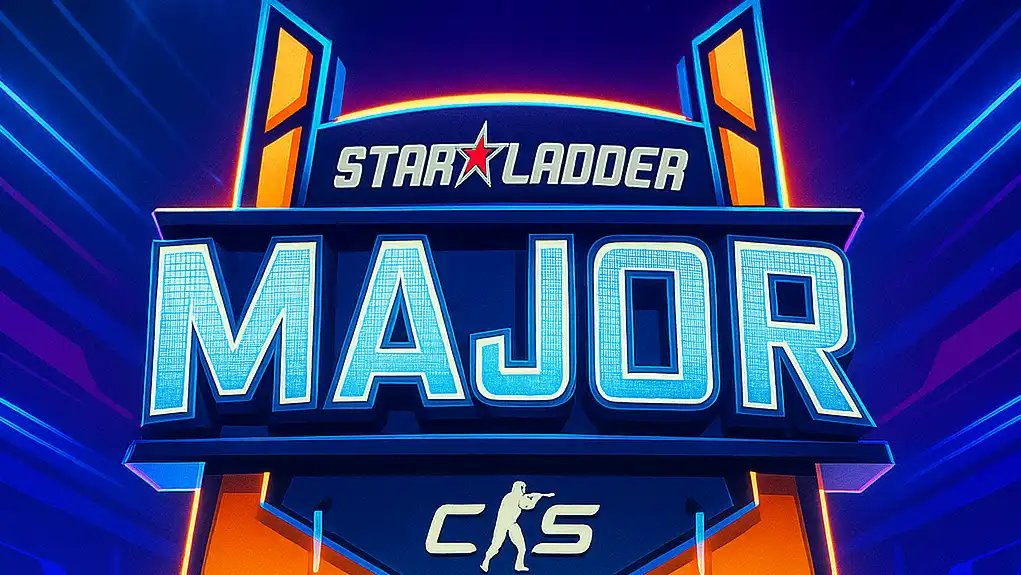StarLadder Budapest Major 2025 revamps final: best-of-five grand finale confirmed

StarLadder Budapest Major 2025 revamps final: best-of-five grand finale confirmed
The upcoming StarLadder Budapest Major 2025, set to take place in Budapest, Hungary from November 24 to December 14, 2025, will mark the first time in the history of the Counter-Strike series that the grand final is played as a best-of-five (Bo5) match. This significant change was officially announced via the HLTV event hub.
Traditionally, CS:GO and early CS2 Majors featured best-of-three (Bo3) grand finals. This shift signals a major structural evolution — both from a competitive and spectator standpoint.
Event background & format overview
The Budapest Major is the fourth CS2 Major overall, and the second one hosted by StarLadder (the previous being Berlin 2019). It features 32 teams, a total prize pool of US$1,170,000, and multiple stages culminating in playoff weekend at the MVM Dome, a 20,000-seat arena in Budapest.
The format breakdown is as follows:
-
Stage 1: 16 teams (via direct invite/qualifier) in Swiss format.
-
Stage 2: 16 teams (top invites + Stage 1 qualifiers).
-
Stage 3: 16 teams, of which the top 8 advance to playoffs.
-
Playoffs: Single-elimination bracket. All playoff matches until the grand final are Bo3; the final itself will be a Bo5.
Significance of the Bo5 final
Adopting a best-of-five for the grand final carries multiple implications:
-
Competition depth: A Bo5 final demands greater stamina, depth in map pool, strategic flexibility and mental endurance. Teams will need to bring more complete performance—not just a strong start, but resilience across potentially five maps.
-
Spectator value: For fans, a Bo5 final provides richer narrative arcs—comebacks, momentum swings, deeper storylines. The decision underscores a push toward more premium content and “marquee spectacle” in CS2.
-
Meta implications: With more maps on the table in a Bo5, teams must prepare broadly. Map vetoes and side-picks will gain even more weight, and organizations will likely allocate additional practice resources and specialist preparation to handle the extended format.
-
Historical milestone: This will be the first CS Major final (in CS: GO or CS2) to use Bo5. That fact alone marks Budapest 2025 as a milestone event in the series’ evolution.
Triggers & context for the change
Several factors appear to have converged to make the Bo5 final possible:
-
After unveiling three Swiss-stage formats in previous CS2 majors, organisers and Valve likely felt the infrastructure was robust enough to support longer final formats. The coverage hub notes that the format of the Budapest Major “will be the second to feature 32 teams” and emphasises that “the final being a best-of-five.”
-
The venue choice (MVM Dome) and the prize-pool suggest an event with heightened production value and global ambitions — thus deserving a final that mirrors its scale.
-
Feedback from the community and media has long suggested that Bo3 finals may feel restricted compared to other esports. By shifting to Bo5, StarLadder aligns CS2 more closely with major titles in other esports that use Bo5 for finals (e.g., Dota 2, League of Legends).
-
The broader CS2 ecosystem appears to be trending toward less frequent but higher-impact events. A Bo5 final helps differentiate the Major as the flagship event of the year rather than just another big tournament.
What to watch & potential challenges
-
Map pool breadth: Teams will need a strong lineup of strategies across all seven active maps (Dust2, Mirage, Inferno, Nuke, Train, Overpass, Ancient). Any weakness will be exposed across a longer series.
-
Endurance management: A Bo5 might pit the two best teams in a gruelling five-map war. Roster depth, player conditioning and mental readiness will matter more than ever.
-
Production logistics: Broadcast teams, venue operations and scheduling now must accommodate a potentially long final; scheduling buffers, time-zone considerations and viewer engagement (especially global) become crucial.
-
Viewer fatigue vs entertainment: There’s a balancing act — longer finals are better for story, but can lag if one side dominates. Organisers will need to retain excitement throughout all maps.
-
Return on investment for teams: For teams making the final, deeper match runs mean more exposure and higher sponsorship value — but also greater risk if unprepared. A strong final showing at a Bo5 carries prestige; a poor showing may carry heavier scrutiny.
Indicative impact on teams & scene
-
Teams that already excel in stamina and map flexibility (e.g., historically dominant lineups with deep benches) may gain competitive edge.
-
Emerging teams that have relied on explosive starts or short series upsets might find Bo5 finals trickier — there will be more room to grind, adapt and strike back.
-
Analysts and commentators will likely highlight “road to the Bo5” storylines — e.g., how do teams pace themselves, whether they save strategies early in bracket for the final, etc.
-
From a scene-branding perspective, the Bo5 final helps elevate the Major’s prestige and could have ripple effects on sponsors, broadcast deals and global recognition of CS2.
Looking ahead: what the community expects
Fans, players and organisations will closely monitor how the Bo5 final plays out at Budapest 2025. Key metrics to watch:
-
Length of final: Will it stretch to five maps, or will one team sweep? A clean 3-0 win might lessen the impact of the new format.
-
Map diversity: Will teams genuinely go five maps covering all map types, or will certain maps be absent?
-
Competitive quality: Are the two finalists capable of playing at the highest level across five maps, or does the depth of field reduce?
-
Broadcast audience metrics: Will viewer numbers increase due to the extended final format, and will fan engagement rise compared to previous majors?
Conclusion: a milestone for CS2
The decision by StarLadder to host a best-of-five grand final at Budapest 2025 is more than just a format tweak — it’s a statement about the maturity and ambition of Counter-Strike 2 as an esport. It raises the bar for what a Major final should look like, adds higher demands for teams and players, and gives fans a grander narrative to follow.
Whether the shift delivers in practice remains to be seen, but the stage is set: Budapest 2025 will not only crown a champion — it could redefine what a Major final in CS2 looks like and set a new standard for years to come.



